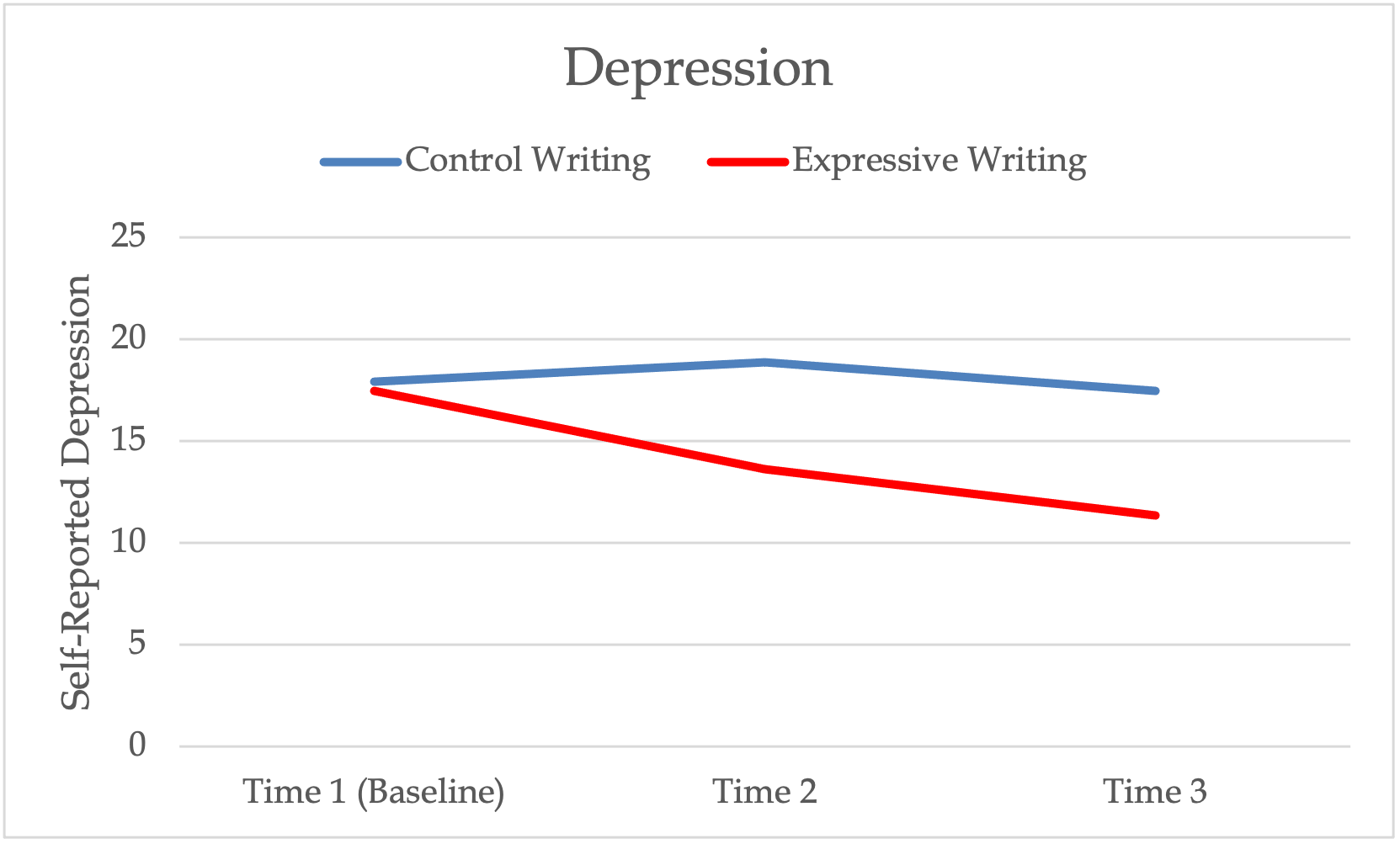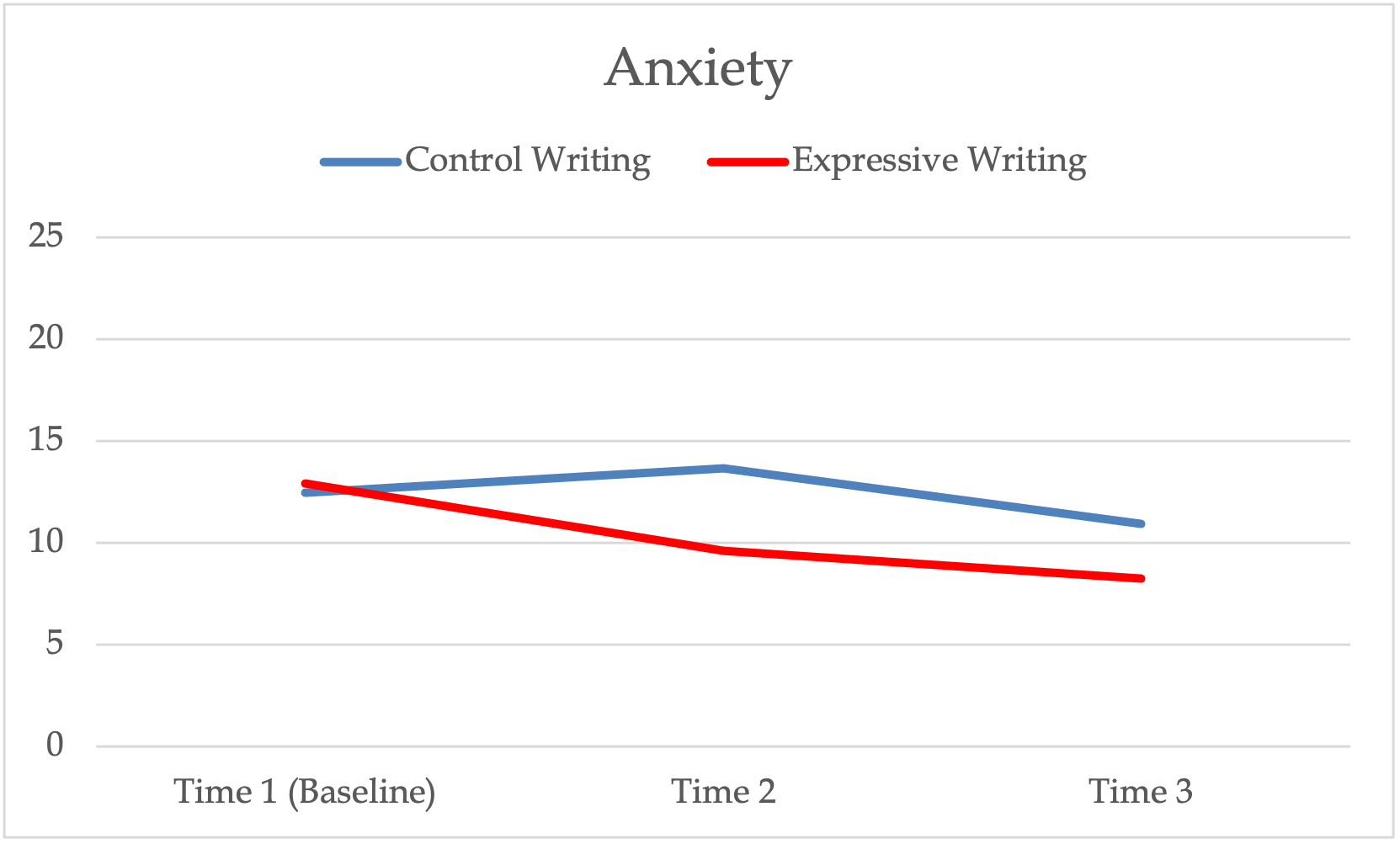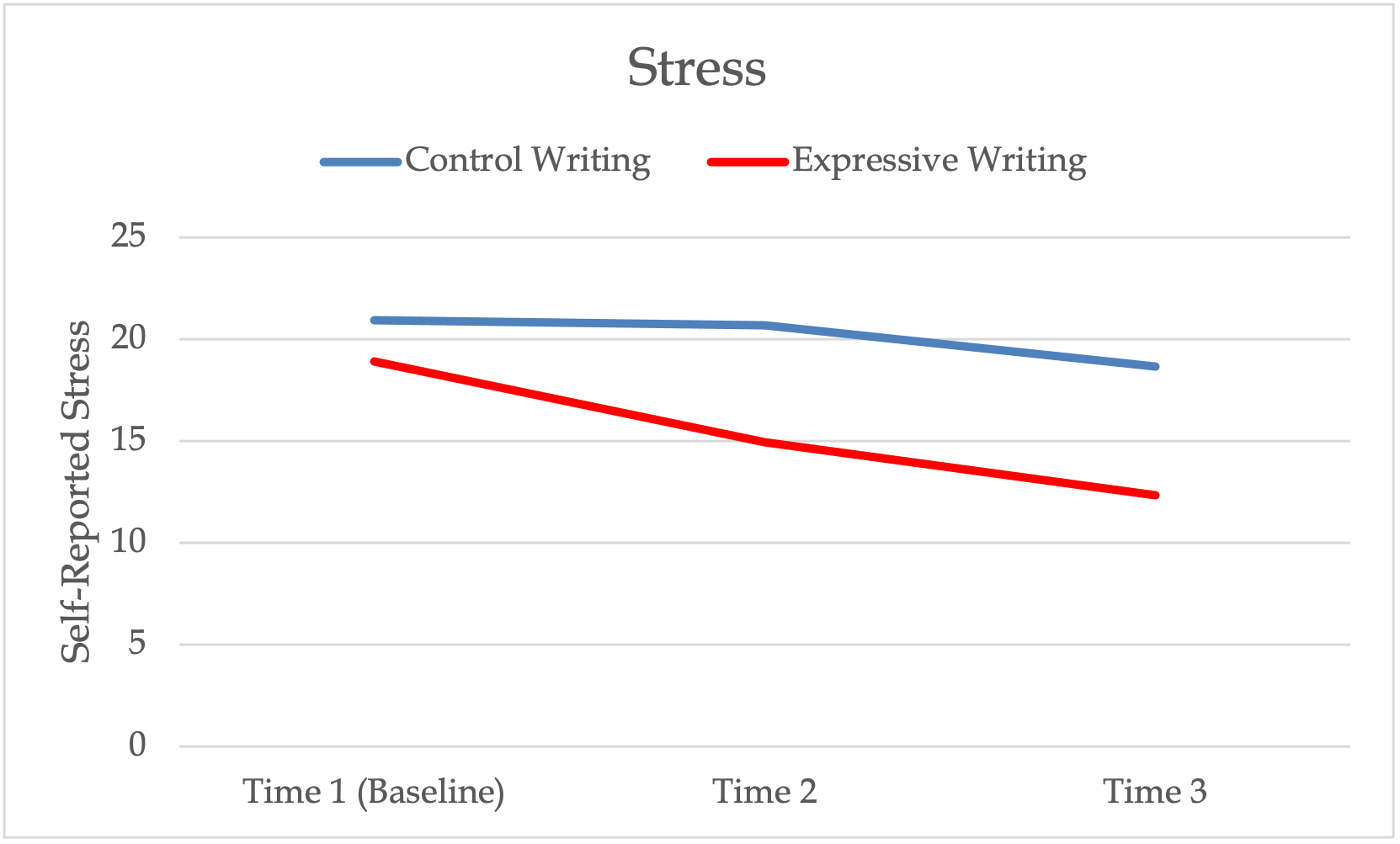Chapter 14 – Emotion Regulation
Impact of Expressive Writing in a Therapeutic Context
A recent study (Graf et al., 2008) applied the writing paradigm to therapeutic treatment for individuals suffering from depression and anxiety. In this study, students receiving treatment were randomly assigned to a writing or control group. Participants wrote for 20 minutes each week for a period of two weeks. Their therapists were blind to their clients’ assigned condition. Below are the instructions each group received about writing.
Over the two-week period, expressive writing participants showed a greater reduction in self-reported depression, anxiety, and stress (see Figures 4-6). Clients in the expressive writing reported greater satisfaction with therapy compared to control clients. Further, therapists reported that they discussed the writing more with clients in the intervention than control group and that their intervention clients achieved greater insight than control clients (remember, the therapists were blind to the conditions!).
Figure 4
Influence of Writing Type on Self-Reported Depression Over Time

Adapted from “Written Emotional Disclosure: A Controlled Study of The Benefits of Expressive Writing Homework in Outpatient Psychotherapy,” by M.C. Graf, B.A. Gaudiano, and P.A. Geller, 2008, Psychotherapy Research, 18(4), p. 394 (https://doi.org/10.1080/10503300701691664) Copyright 2008 by Routledge.
Figure 5
Influence of Writing Type on Self-Reported Anxiety Over Time

Adapted from “Written Emotional Disclosure: A Controlled Study of The Benefits of Expressive Writing Homework in Outpatient Psychotherapy,” by M.C. Graf, B.A. Gaudiano, and P.A. Geller, 2008, Psychotherapy Research, 18(4), p. 394 (https://doi.org/10.1080/10503300701691664) Copyright 2008 by Routledge.
Figure 6
Influence of Writing Type on Self-Reported Stress Over Time

Adapted from “Written Emotional Disclosure: A Controlled Study of The Benefits of Expressive Writing Homework in Outpatient Psychotherapy,” by M.C. Graf, B.A. Gaudiano, and P.A. Geller, 2008, Psychotherapy Research, 18(4), p. 394 (https://doi.org/10.1080/10503300701691664) Copyright 2008 by Routledge.
For those of you interested in how expressive writing could be used in a therapeutic setting visit Pennebaker’s article here.

